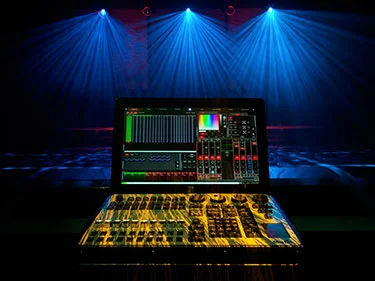The story //
When we first started creating stage designs for our church back in 2005 we had no budget, little know how, and very few materials. The only thing we really had going for us were a couple people with a good eye for design. We began building things out of scraps we would find, making our own light fixtures, gels, and support structures. As we acquired more knowledge about lighting through research and other people our designs really started to take shape. Because we had no budget it was difficult when the design needed to be changed. At this point we had the idea of making our designs modular and reusable. If we could get the budget for a few key items, we could create several different designs out of the same equipment. Shortly after this we did receive a small budget and were given several lighting fixtures to work with. Over the next few years our designs would get better and better until many were eventually mistaken for professional installations and we were asked to create a design for another church. When we presented them with our idea of a modular stage design they were thrilled. Since then we've been been creating more and more stage designs for our church and making build guides and ideas for friends at other churches. When we started LUPER we new this was something we had to include as one of our services.
\\ beginning the process
Before we get started with a design we like to get pictures of your stage and the rest of your auditorium or space, dimensions of each for scale, where outlets are located, and what lighting and support equipment you already have if any. This way our design fits and works in your space, you're not having to run extension cables everywhere, and we're not recommending you buy equipment that you already have.
the inspiration //
Once we have the above we'll talk to you about what type of design you were looking for, any ideas you have, what your budget is, things you need to have, what the worship team needs as far as space and power, what lighting console you use, and what features you'd like the design to have, like multi function LEDs, moving lights, independent incandescent lights, and so on. Ideas could as complex as an entire stage design that another church did or as simple as a single light fixture you thought was cool.
\\ The design begins
From here we'll begin making a few mockups and nail down your designs. We create two companion layouts/designs with each of the base designs all using the same equipment so you can change between them whenever you like. Once the designs are done, we'll work with you on which equipment you would like to buy, the best places to purchase it (we usually only carry a small amount of the lighting equipment we recommend), and how it should be setup.
The build guide //
Once we know what equipment you'll be working with we'll finish our build guide and stage layout. Our build guides will explain how each piece connects together, the instructions for building support structures if needed, where things should be placed, and where to run cables so that they don't interfere with the worship team.
\\ Programing
The only thing left to do once the build is finished is programing the new lights with your lighting console. We typically leave this up to each church to handle as we don't know every lighting console out there as well as each church will know what kinds of cues, groups, and chases that they want created. However, we have quite a bit of experience with the Martin's M-Series lighting consoles and MPC, and since Elation has acquired the M-Series from Martin, Elation's M-Series and Onyx. We can do programming for these systems.


